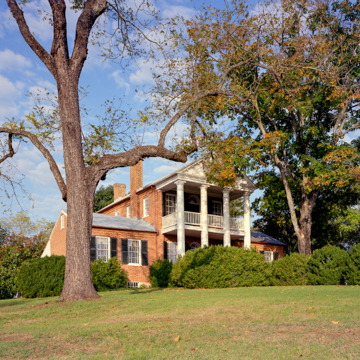You are here
Turman House (Stono)
This was the home of Jordan, who with his partner, Samuel Darst, was one of the most important builders in Rockbridge County in the early nineteenth century. They were responsible for introducing neoclassical design into Lexington, as this house clearly demonstrates. Dramatically located on a steep ridge overlooking the Maury (in the nineteenth century, called the North) River, the two-story Tuscan-columned portico and one-story side wings conform to a Palladian design espoused by Thomas Jefferson. The columns, however, are the same elongated form that Jordan and Darst would use on the Willson-Walker House (RB5) and Washington Hall (see RB16). Jordan had cotton, woolen, flour, grist, and lumber mills on the site as well as his office, a carriage house, and a round, stone icehouse. The Turman House is now owned by the VMI Foundation and used for guests and visiting scholars.
Writing Credits
If SAH Archipedia has been useful to you, please consider supporting it.
SAH Archipedia tells the story of the United States through its buildings, landscapes, and cities. This freely available resource empowers the public with authoritative knowledge that deepens their understanding and appreciation of the built environment. But the Society of Architectural Historians, which created SAH Archipedia with University of Virginia Press, needs your support to maintain the high-caliber research, writing, photography, cartography, editing, design, and programming that make SAH Archipedia a trusted online resource available to all who value the history of place, heritage tourism, and learning.


